A perfect combination of the risk and reward ratio might make your trading career fruitful. However, if you don’t know how to maximize the market’s benefit while the situation is favorable, you will trade with a loss.
Therefore, the perfect risk: reward ratio with proper trade management would bring you success in any trading strategy. If you are eager to know the best risk vs. reward for a trade, the following section is for you. Here, we will discuss the importance of risk and reward in your trading strategy, including a proffer short-term and long-term trading methods.
What is the high-risk, low reward ratio?
Risk is the amount or a portion of your investment that you are ready to lose in case of adverse market movement. On the other hand, if the market becomes favorable, the reward is the money that will add to your trading balance as a profit.
People do forex trading to make money, focusing more on rewards in every trade than risk. But, on the other hand, we know that the global financial market is a decentralized marketplace where no one knows the future direction of every price. In that case, a calculative approach in risk vs. reward is the only way to play safely in this field.
What does it mean by high risk?
Higher risk means taking more risk of a trading account than usual. Taking high-risk trades has a higher return, but following every dangerous high trade is not mandatory. If you find any trading setup with a higher risk, follow it with a proper money management system.
How to identify the high-risk low reward ratio?
You can set how much risk you want to take by trading from the MT4 or MT5 platform in any CFDs trading. However, before taking the trade, you should know the logic behind setting the stop loss and take profit.
In every trading, there are conservative approaches and aggressive approaches. In aggressive trading methods, investors expect that the price will move immediately after opening the trade. Therefore, they take a tight stop loss to gain higher rewards. Most of the high risky trades come from multi-timeframe analysis where investors see what broader market is heading.
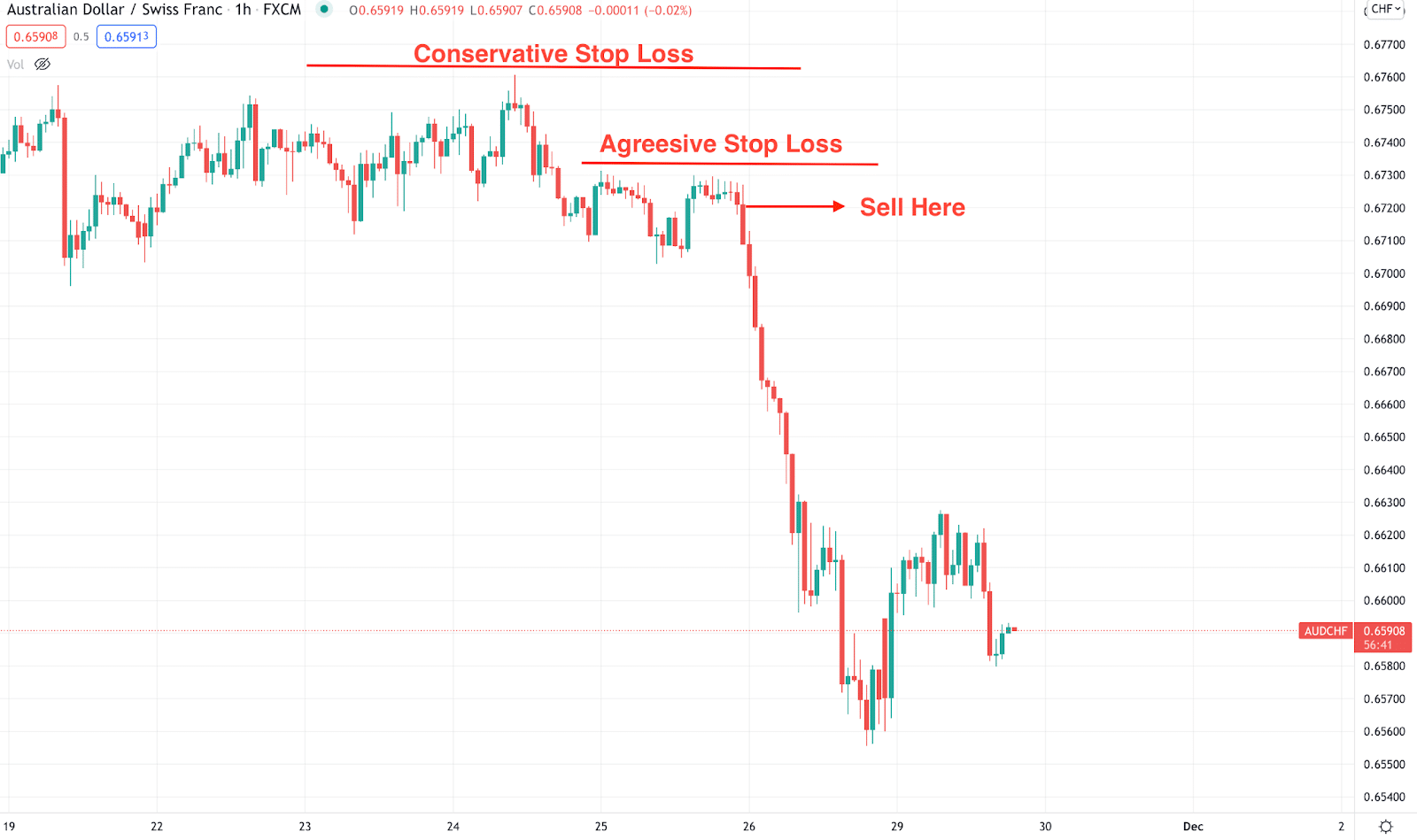
The above image perfectly explains how the conservative and aggressive trading approach works in a single trade. Here, we can see a sell setup where traders can set the SL level based on the recent candlestick or swing level.
The aggressive approach needs more confirmation in a trade than the conservative approach. On the other hand, the reward is another technical element that a trader should consider in trading. In every strategy, keep the reward level higher than the risk to remain overall profitable.
A short-term strategy
We will see a simple way to participate in the market and the best high-risk, low reward ratio approach in short-term trading. If you are an intraday trader and want risk a bit higher, you can follow the aggressive approach. Otherwise, it would help if you stuck to the conservative approach.
Bullish trade setup
We will see a market scenario in the buy setup where the overall outlook is bullish in the higher time frame. Later on, when the buying pressure becomes weaker, and the price starts to lower, we will open a buy trade from a significant price level. In addition, we will use dynamic weekly VWAP and MACD for additional confirmation.
Let’s see an example of the buy trade.
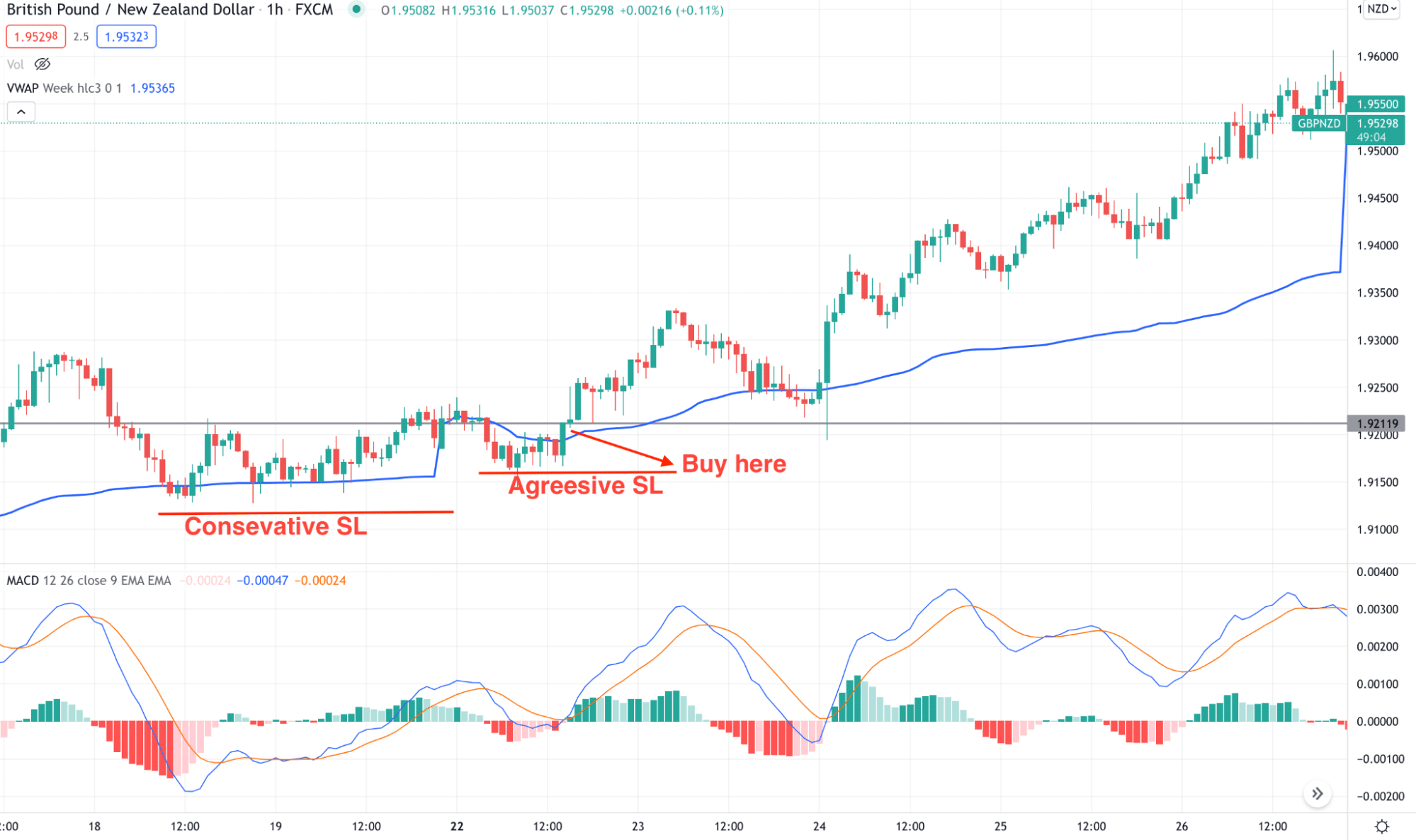
This image shows the H1 chart of GBP/NZD, where the buying entry comes after the price moves up above the static level and dynamic VWAP. In this entry, the high-risk stop loss level was below the rejection candle, and the conservative approach was below the swing low, as marked in the image. In both cases, investors should use some buffer to avoid unexpected market hit.
Bearish trade setup
Now, we will see the same approach in the bearish market context. This trade will get the overall market direction as bearish and open trades from any vital event level and dynamic VWAP rejection.
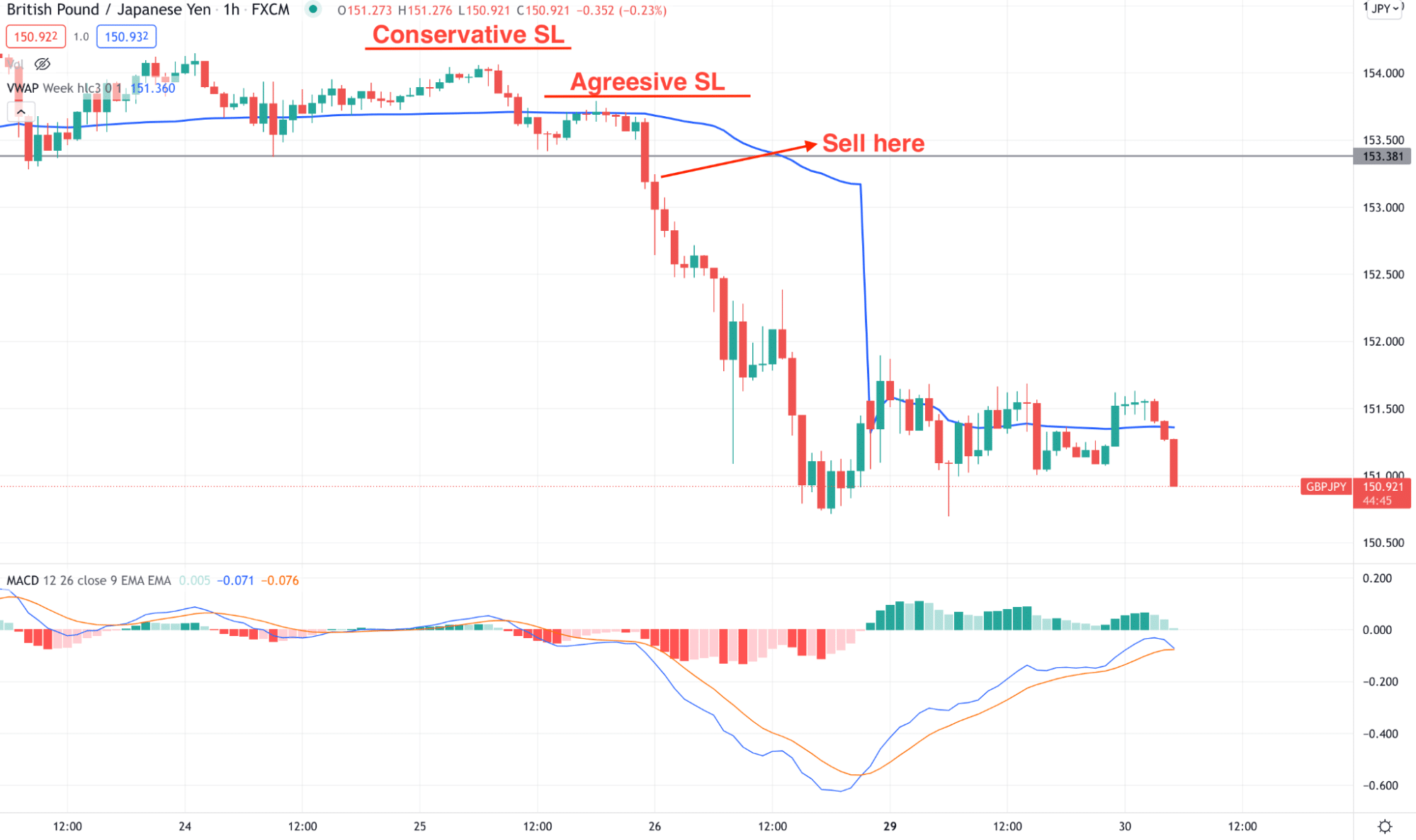
In the GBP/JPY H1 chart, the price is moving down where the selling entry becomes valid as soon as the price moves below the dynamic VWAP with a bearish H1 close.
On the other hand, the aggressive SL was just above the dynamic level with some buffer, and the conservative approach was above the recent swing high.
In terms of reward, you can close the trade after reaching any important price level but make sure to predict the risk and reward per trade. A good selling trade with 50 pips stop loss, and 20 pips take profit is not affordable.
A long-term strategy
In long-term trade, investors usually hold trades for a long time. In that case, we can violate the stop-loss-taking system. Therefore, the high risk and low reward systems work well in the longer-time frame trading.
Do you know about the investment approach?
Long-term investors often use an anti-martingale system to add positions in a losing trade and get out of the market once all traders become profitable. This approach is the perfect example of high risk and low reward trade, but it needs substantial capital.
Bullish trade setup
As we focus on higher risk and lower reward, this approach might have a higher floating loss. First, find the price at the bottom of the daily chart and open the first buy trade immediately with a 0.5% risk of your capital. Now, open 2nd, 3rd, and 4th trade after 40 pips gap until the price moves 500 pips negative from the first entry. When the price reverses, you can close the trade with all profits.
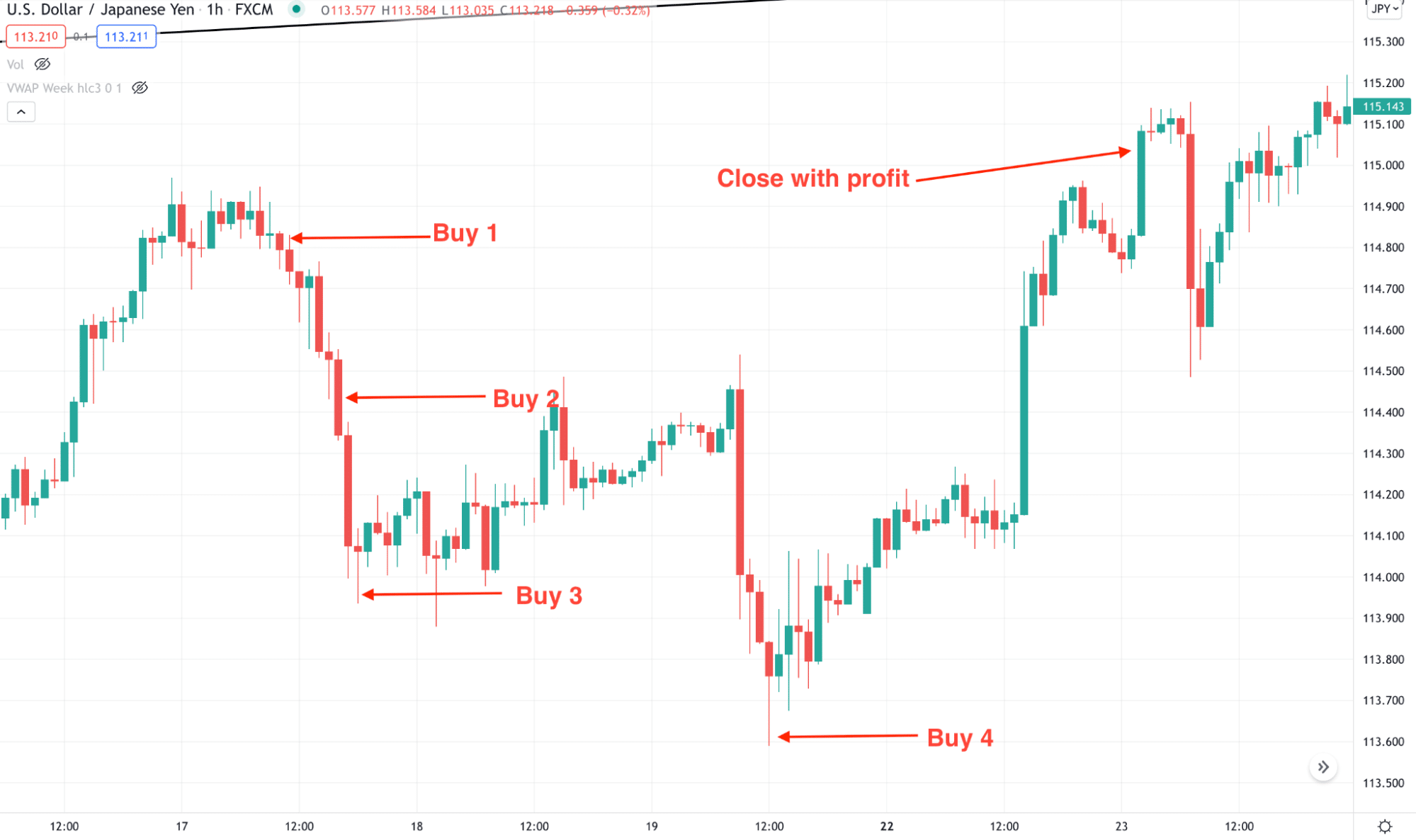
The above image shows how the anti-martingale system works at the USD/JPY price. It took the maximum loss during the hit of the fourth buying position.
Bearish trade setup
Now we will see the same concept in the bearish context, where we will open multiple sell orders and close all trades once the price provides profit.
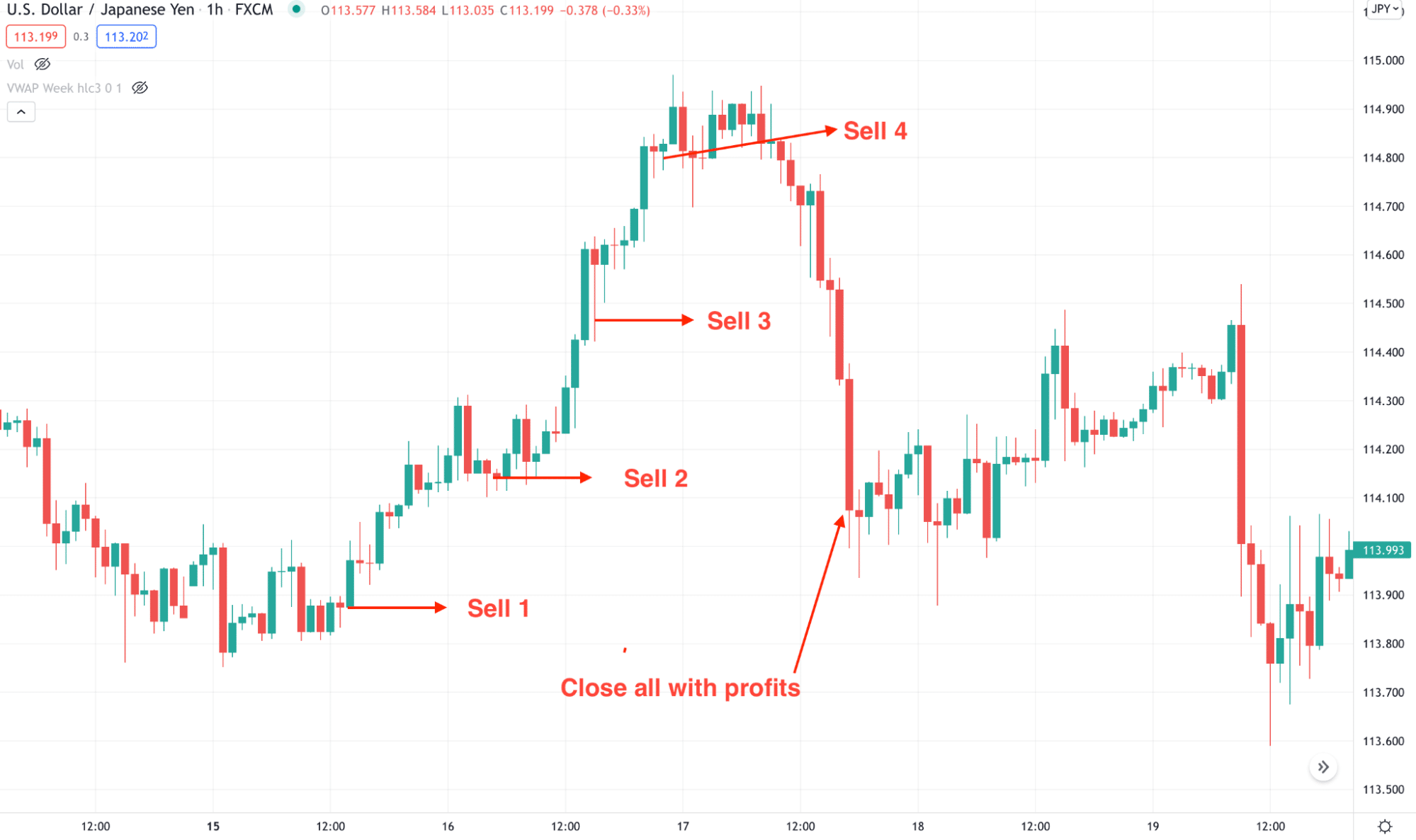
The above image explains how the high-risk, low reward works in the forex market. You have to set a maximum tolerable risk you are willing to take per trade in both cases. If the price moves against you, it is not wise to add positions for unlimited time. The best approach is to add a buy/sell position for 500-800 pips backup.
Pros and cons
Let’s see the pros and cons of the high-risk, low reward ratio trading strategy.
| Pros | Cons |
| An affordable investment approach that has a higher possibility of hitting the take profit. | A risky strategy if you don’t have a healthy trading balance. |
| This method is applicable on any currency pair and on any time frame. | The risk and reward ratio is poor. |
| It does not require having complex trading knowledge. | Needs additional attention to trade management. |
Final thoughts
In high-risk, low reward ratio trading, investors should understand how the HODLing approach works in the forex market. It is not mandatory to get profits from your every trade. If the overall profit is coming from multiple losing trades, it is not bad. However, in this method, you should avoid pairs that can crash like Brexit crash.




